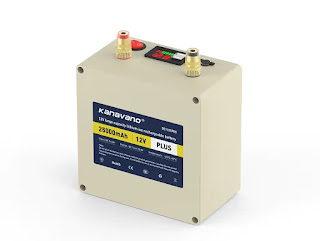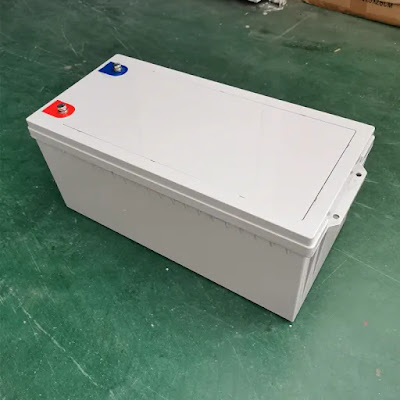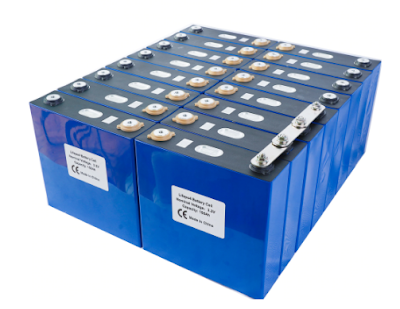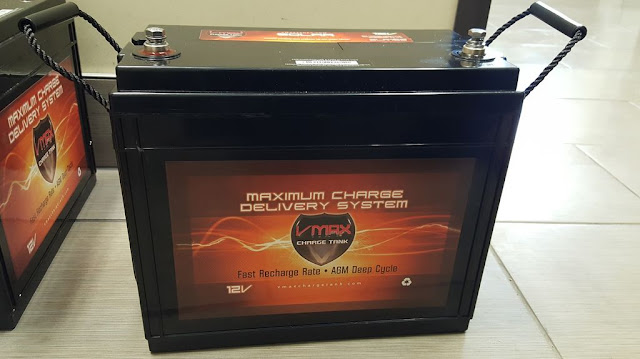Homemade Battery Generator - Find New Electricity To Supply The Battery!
https://homemade-generator-tao.blogspot.com/2019/12/homemade-battery-generator.html
The basic structure of Battery Generator includes Batteries and inverters. So we will first learn about the battery, then the inverter. The problem of making battery generators is difficult because of the battery's power supply. The most common source of battery power is the solar system. But basically, it's still the battery + inverter - in the name of Homemade Battery Generator.
Battery in Battery Generator
Power source for batteries
The power source for batteries is the charging of electrical energy (like charging) for batteries.
Some power sources for batteries:
- Electricity of the electricity industry - the national grid
- Solar energy systems
- Homemade alternating current generator
- Earth battery
In general, homemade battery generators often serve a number of specific purposes. For example, in the experiment converting DC into AC with beautiful sine wave.
Another example is the Homemade Battery Generator for emergencies - power outages.
The problem is still the battery power supply. This problem belongs to homemade generators in general.
The problem of recovering batteries
The battery is damaged or has a problem, etc. There are solutions. You can restore the batteries at the scrap yard, after which you will have an energy storage tool.
Battery recovery blog: Battery Restore
You can find unique recovery methods for many types of batteries here: https://ezbatteryreconditioning.com/
New Battery for sale - Buy the best and cheapest
Introduce you some Batteries to buy - best and cheapest:
1. 12V 25AH LifePO4 battery pack with BMS for 12.8V 25000mAh backup power bank solar panel energy Portable with 4A charger
US $95.40
Scope of application:
All 12V appliances, washing equipment, xenon lamps, instead of 12 volt batteries, instrumentation, amplifiers, monitoring, electrical, various 12V lamps.
Size: (L)160mm×(W)90mm×(H)187mm
2. 12V 7A 9AH 12AH 15AH 21Ah lithium li ion rechargeable battery pack for car toy sprayer scale Access control children toy airplan
US $34.32 - 59.84
Brand battery Features:
- High energy density
- Long cycle life
- Wide application
- High discharge rate
- Safety: Excellent abuse tolerance and environmentally friendly
- Life: Excellent calendar and cycle life.
3. 12V 200AH 2200W Power Lithium-Ion Battery Pack with 3 Series BMS Board for RV Fishing Boat Yacht Energy Storage System
US $562.50
These buyers who buy this battery, must agree that you are familiar with the safe use of lithium battery Knowledge. Any brokens by human behaviours we wonot keep it in warrenty!
Safety Reminder: DIY assembled when good protective measures, Wear protective goggles, insulated gloves. "+" on the case show positive,"-" on the case show negative , if not any speical description ,please remember.
More details: Power Lithium-Ion Battery Pack with 3 Series BMS Board for RV Fishing Boat Yacht Energy Storage System
4. 32PCS 3.2V150Ah 2019 new Lithium Iron Phosphate Cell lifepo4 battery solar 48V300AH 48V96V150Ah cells 24V600Ah EU US TAX FREE
US $3,036.97
Product Specification:
- Product Name: Lithium iron phosphate cell
- Shell Material:Aluminium
- Rated capacity:150Ah
- Minimum capacity:150Ah
- Internal impedance:0.2~0.3mΩ
- Nominal voltage:3.2V
- Dimensions(L*W*H):174*48*171mm
- Weight:2.95±0.10kg
- Recommend Constant Current:150A(1C)
- End-of-Discharge Voltage:2.5V
- Recommend Constant Current:75A(0.5C)
- Charge Voltage:3.65V
- Maximum Pulse Discharging Current:228A(3min)
- Maximum Pulse Discharging Current:300A(30S)
- Charge Voltage:3.65V
- Max Continuous Discharge Current:150A(1C)
- Cycle life (80%DOD):4000 cycles
- Charging Temperature:-5~60°C
- Discharging Temperature:-30~60°C
More details: Lithium Iron Phosphate Cell lifepo4 battery solar 48V300AH 48V96V150Ah cells 24V600Ah EU US TAX FREE
Some backup links help you find the best battery:
Inverter equipment in Homemade Battery Generator
The inverter is an electrical signal converter: it can be converted from DC to AC, from DC to pulse, etc.
Usually, the inverter has a built-in battery - it's like a UPS (Uninterruptible power supply). However, you can still use it independently, and it acts as a real inverter
Basic inverter:
US $133.10
Some links to help you choose the best inverter:
Backup link for Battery Inverter - UPS :
DIY Size & Build a Battery Power Backup Generator W/ 12V Deep Cycle Batteries
Be prepared before the next time the power goes out with a standby battery powered generator. Build your own battery backup system for your home or business. A battery backup system allows you to power your essentials when the grid is down. Using sealed AGM deep cycle batteries, this system is safe for indoor use; you can install this system in your closet, in the corner of your office, or make it portable by using a cart.
By building your own battery backup system, you can size it to your desired needs. We will go over how to choose the right size battery and inverter, and how to put the system together.
You will need:
-1 or more sealed deep cycle batteries
-1 DC to AC power inverter
-1 Smart Charger/Maintainer
-Inverter cables and battery link cables (if using more then one battery)
For this system I used the following:
-2 VMAX SLR155 12-Volt 155Ah AGM batteries connected in parallel (vmaxtanks.com)
-1 12V DC to AC 2000 Watt Inverter (online or from a hardware store)
-1 Vmaxtanks BC1220a 12V 20A 7-Stage smart charger
-1 Set of 2 gauge 6' 100% copper inverter cables (4Ga would have also worked, be sure to check the ratings of the inverter cables you buy)
-1 Pair of 4 Gauge 12" 100% copper link cables
Step 1: Choose a Power Inverter
When choosing an inverter, pick one with a wattage rating higher then what your devices use; add up the wattage of the devices you would like to power. Your appliances will usually have a label which indicate the input wattage or amps. Wattage is simply volts times amps. For example if your laptop charger uses 80 Watts, and your phone charger uses 20W, you need an inverter rated for at least 150W. Blenders typically use 300W, so to power your blender, laptop and charge your phone you would need a 500W inverter. It is always better to oversize your inverter. I chose to use a 2000W inverter.
Step 2: Choose a Battery
A deep cycle battery is recommended since deep cycle batteries can be cycled many times. If you use a flooded car battery it will be damaged by being deeply discharged. I chose to use AGM deep cycle batteries by VMAXTANKS, since they can be cycled many times and are sealed. AGM batteries are also maintenance free and safe for indoor use. By adding up the wattage of the devices you want to power, you can figure out what size battery bank you will need. Take the watts, ex. 400W, and multiply by how many hours you want to power the 400W load.
To power a 400W load for 5 hours:
400W x 5 hours = 2,000 Watt Hours
For 2,000WH, choose a battery bank which provides at least 4000WH(4kWH) to keep your batteries from going below 50% capacity (this will help your batteries achieve more cycles over time).
In my battery bank I used two VMAX SLR155 batteries, rated at 2.1kWH each, for a total of 4.2kWh, or 4,200 Watt Hours. Deep Cycle batteries can be cycled past 50%, but keeping your batteries above 50% will give you many more charge cycles. High quality batteries will give you more cycles, Vmaxtanks batteries have very high cycle counts and are military grade. Always fully recharge deep cycle batteries after every use. Below are several different vmaxtanks battery options:
SLR60: 0.8 kWH (800 Watt Hours)
SLR100: 1.35kWH (1,350WH)
SLR125: 1.7kWH (1,700WH)
SLR200: 2.66kWH (2,660WH)
XTR8D-350: 4.7kWH (4,700WH)
Step 3: Choose a Battery Charger
You will need a smart charger compatible with your batteries. For deep cycle batteries you will need a multistage "smart" charger/maintainer. The battery charger should be matched to fully charge batteries in ~15 hours or less.
I used a Vmaxtanks 12V 20A 7-Stage charger(BC1220a), which is capable of charging and maintaining my battery bank. Vmaxtanks chargers can be left on the batteries all the time, so your batteries will always stay charged and ready to go.
Step 4: Connecting It All Together; See Images for Steps
For my system I used the following:
-2 VMAX SLR155 12-Volt 155Ah AGM batteries connected in parallel (vmaxtanks.com)
-1 12V DC to AC 2000 Watt Inverter (online or from a hardware store)
-1 Set of 2 gauge 6' 100% copper inverter cables (4Ga would have also worked, be sure to check the ratings of the inverter cables you buy)
-1 Pair of 4 Gauge 12" 100% copper link cables
-1 Vmaxtanks BC1220a 12V 20A 7-Stage smart charger
Step 5: (OPTIONAL) Use a Charger/inverter With a Built in Auto Transfer Switch.
If you have a server, printer, computer station, or any other device you do not want to shut off when the power goes out, use an inverter which features a built in charger and an automatic transfer witch. The Charger/Inverter will plug into an AC outlet and keep the batteries charged. You can plug in your appliances into the inverter to draw AC power, when the power is out the inverter will automatically switch to battery power. This is very useful if you are running a server/printer/computers/medical equipment etc. and can not afford to have it unexpectedly shut down in the middle of a task.
A Charger/Inverter will also provide a cleaner looking setup since the charger and inverter will be combined into one unit.
Power to supply Battery
As mentioned above, the difficult problem of electric power, is where to exploit energy? and how to exploit electricity?
Here, I would like to introduce a plan for homemade generators - power supply for batteries.
Homemade Generator Plans - Power to supply Battery:
The plan was created by some anonymous scholars during the free energy suppression period. Although they came up with the best design (meaning they still kept secrets and copyrights), it was enough to provide electricity for the home, and more than enough power to power the battery.
Revealed At Last: Ancient Invention Generates Energy-On-Demand
✔ Nikola Tesla’s method of magnifying electric power by neutralizing the magnetic counter-forces in an electric generator
✔ Currents are 180 out of phase with each other, Lenz's law naturally is broken
✔ Principle of Resonance to achieve Overunity
Revealed At Last: Ancient Invention Generates Energy-On-Demand
✔ Nikola Tesla’s method of magnifying electric power by neutralizing the magnetic counter-forces in an electric generator
Generates Energy-On-Demand: Easy Power Plan Will Change Our World Forever
✔ Currents are 180 out of phase with each other, Lenz's law naturally is broken
✔ Principle of Resonance to achieve Overunity



















